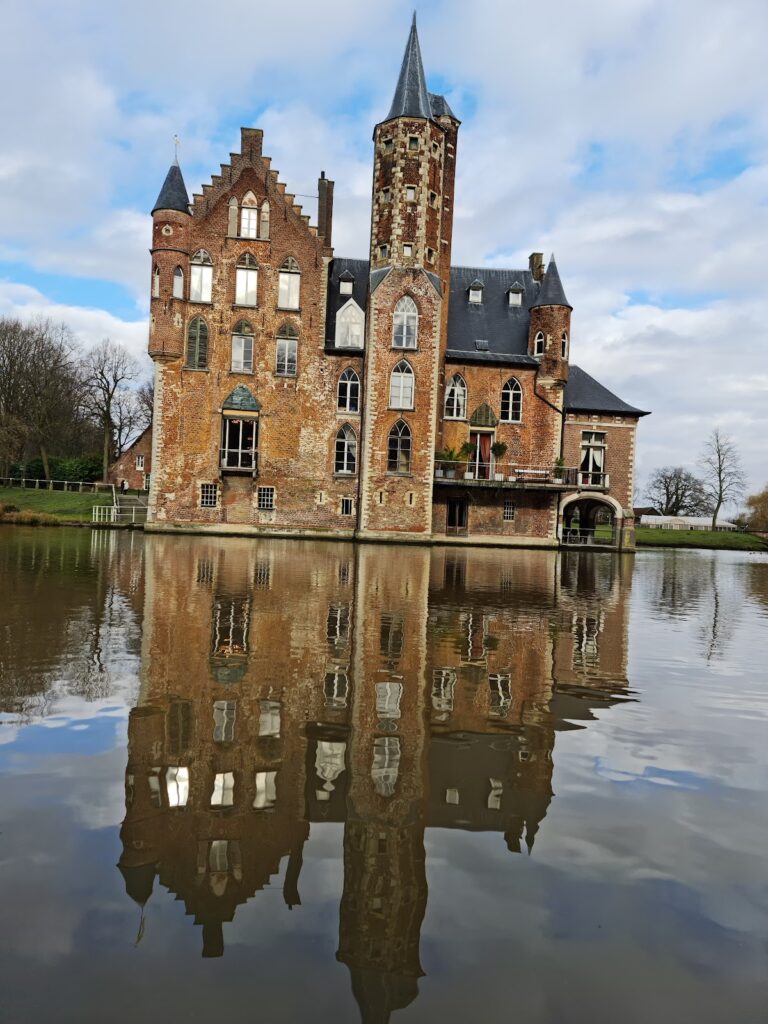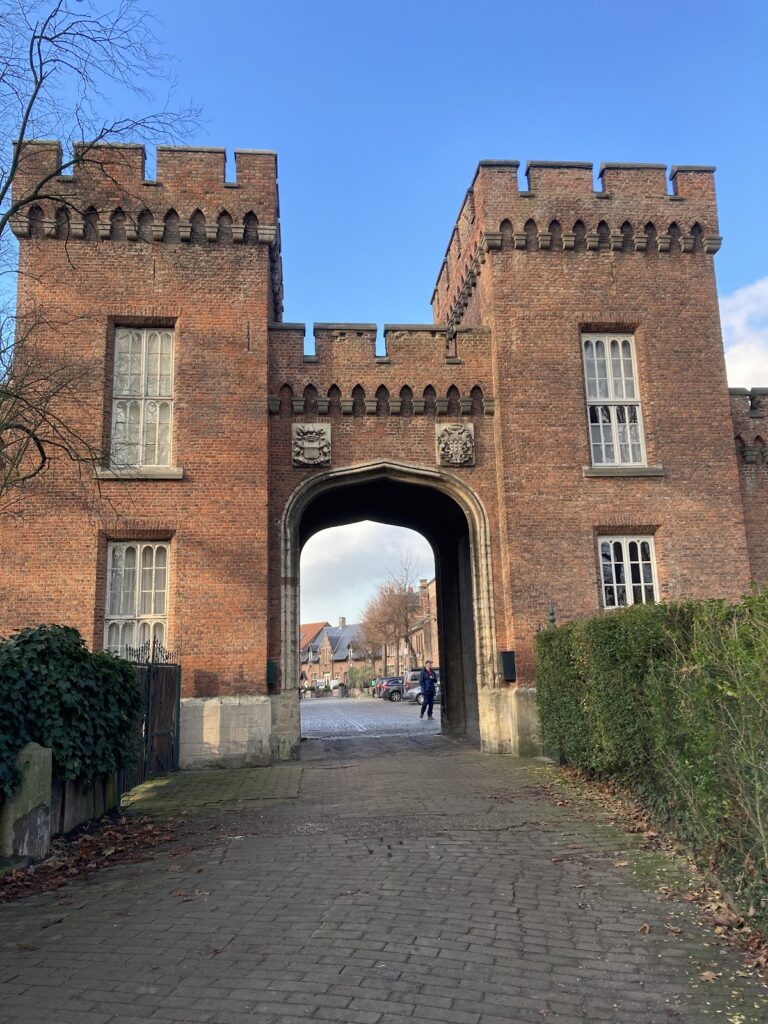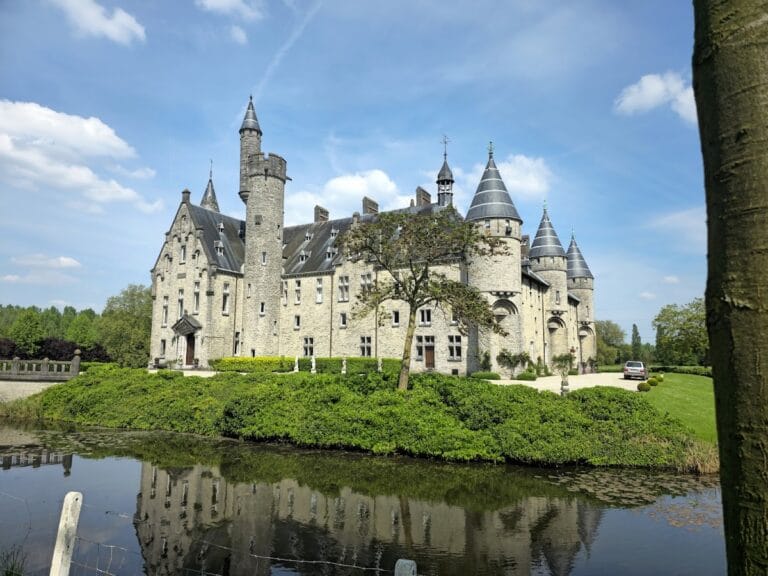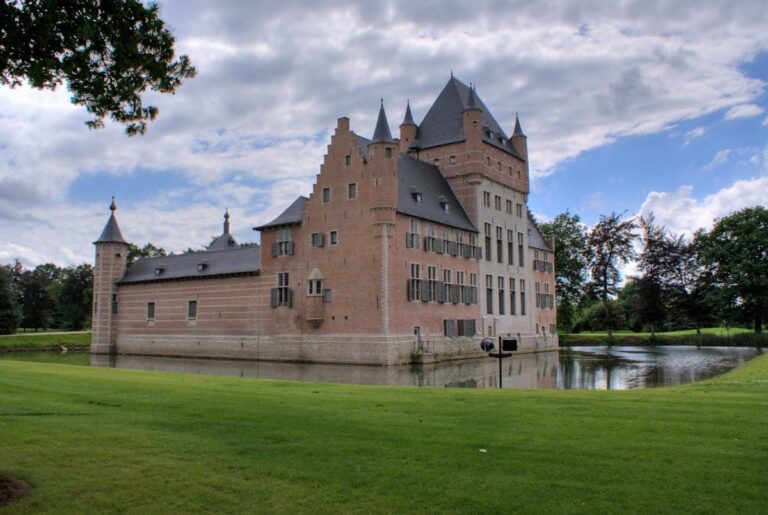Kasteel Wissekerke: A Historic Castle and Estate in Kruibeke, Belgium
Visitor Information
Google Rating: 4.5
Popularity: Low
Google Maps: View on Google Maps
Official Website: www.kruibeke.be
Country: Belgium
Civilization: Unclassified
Remains: Military
History
Kasteel Wissekerke stands in the municipality of Kruibeke, Belgium, tracing its origins to the medieval period when it was established by local European nobility. Its earliest known fortifications date back to the mid-12th century, during the Middle Ages, indicating its role as a stronghold within the County of Flanders.
The estate initially featured deep water-filled moats and drawbridges that provided controlled access, reflecting typical defensive strategies of the period. Though the original medieval fortifications no longer survive, this early construction marks Wissekerke as one of the largest estates in the region at that time. The castle faced near-total destruction in 1583 when military forces under Philip van Marnix, a leader of the Dutch Revolt, launched an attack, leading to extensive damage. The main tower that remains today was built shortly after this conflict in the 16th century, replacing earlier structures lost during the siege.
In the early 1500s, ownership of the estate transferred to the Vilain XIIII family, a noble lineage that maintained it as their main residence for several centuries. This family was deeply intertwined with local governance, holding the mayoral office of Bazel uninterrupted for 139 years. Their influence extended beyond administration to architectural modifications, reflecting changing tastes and status.
Following the Napoleonic Wars in the early 19th century, the castle’s military function was transformed into that of a grand residence. The surrounding landscape was redesigned in the English garden style, emphasizing naturalistic features in place of defensive elements. The 19th century brought further enhancements, including the addition of a neotudor-style gatehouse commissioned by Viscount Philippe Vilain XIIII and the adoption of richly decorated interiors, notably an Empire-style salon created by Vicomtesse Sophie-Louise-Zoé de Feltz. An ambitious engineering project of the era was the excavation of a 1,400-meter canal linking the castle’s ponds to the nearby Scheldt River, enhancing the estate’s water features.
By the mid-20th century, the Vilain XIIII family gradually ceased using the castle as a residence. In 1989, the municipality of Kruibeke assumed ownership and began preservation efforts, adapting the site for cultural uses such as exhibitions and public events. The estate’s historical and architectural value was formally recognized in 1981 when the castle and its associated structures were protected as monuments. Continued investment in restoration included a notable grant of €130,000 awarded in 2022 by the Flemish Minister of Immovable Heritage aimed at maintaining the site’s integrity.
Remains
The surviving Kasteel Wissekerke complex reflects a blend of periods, prominently featuring structures from the 19th and 20th centuries overlaid upon a medieval core. The castle is constructed mainly of brick and exhibits brick cross-rib vaults, a ribbed ceiling design where brick ribs support the vault. Although most visible architecture is from later renovations, the site retains its oldest elements, including a 15th-century basement and the main tower erected in the 16th century after the siege of 1583.
Among the estate’s remarkable features is an iron suspension bridge constructed in 1824 by engineer Jean-Baptiste Vifquain. Spanning 20.5 meters, this bridge is notable for being the oldest surviving chain suspension bridge in Europe. It was originally designed with wooden walkways and utilized innovative bolted connections that departed from the traditional use of carpentry joints. Today, the bridge preserves its original structural columns, portals, chain components, and railings, though its deck has been replaced. Restored in 2012, the bridge stands as a significant example of industrial-era engineering and design.
The castle park surrounding the building is accessible to the public and includes the canal linking the estate’s ponds to the Scheldt River, a water feature created in the 19th century as part of the landscape transformation. Adjacent to the castle, the neotudor gatehouse constructed under Viscount Philippe Vilain XIIII’s direction presents stylistic elements characteristic of the period’s revivalist trends. Inside, richly adorned rooms include an Empire-style salon commissioned by Vicomtesse Sophie-Louise-Zoé de Feltz, showcasing the decorative tastes of the 19th century.
Together, the castle, gatehouse, suspension bridge, and ancillary structures such as the dovecote were recognized for their historical and architectural value when declared protected monuments in 1981. The site currently hosts the Villain XIIII Museum, preserving the family’s legacy and the estate’s layered history within the fabric of the building and grounds.










